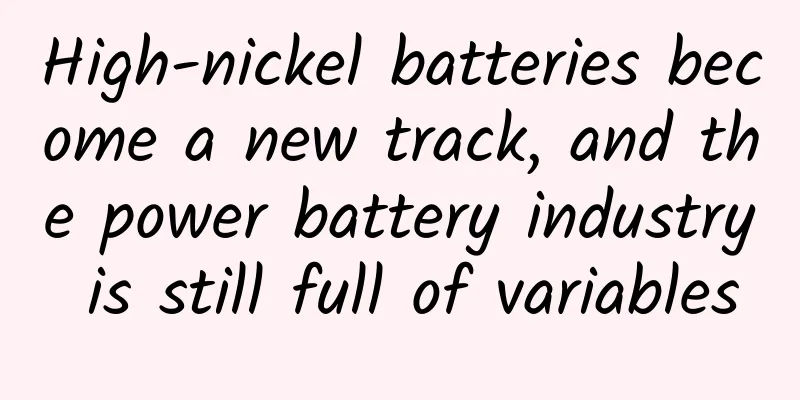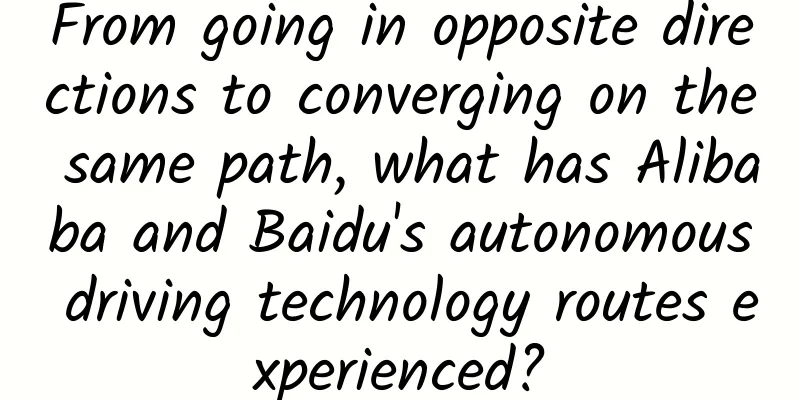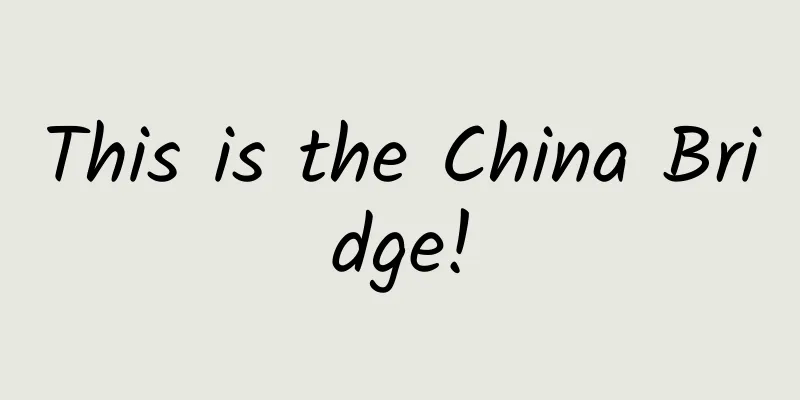High-nickel batteries become a new track, and the power battery industry is still full of variables

|
With the help of favorable policies and subsidies, China's power battery industry has achieved certain results, the most outstanding of which is that CATL became the world's power battery sales champion in 2017.
In the power battery industry, China has only temporarily won a stage. The competition is still going on, and it is hard to say who will have the last laugh. Japan will not lag behind in the power battery industry. In June this year, the New Energy and Industrial Technology Development Organization of Japan will jointly develop solid-state batteries with 23 automobile, battery and material companies including Toyota, Honda, Nissan and Panasonic, and plans to fully master the relevant technologies of solid-state batteries by 2022. On August 7, it was reported that researchers from the Tokyo Institute of Technology and other institutions in Japan have developed an all-solid-state battery that can be charged and discharged at ultra-high speeds, making significant progress in the practical application of solid-state batteries. All-solid-state lithium batteries have advantages over liquid batteries in terms of high density, high safety, and high output power, and are expected to become the next generation of batteries to replace current lithium-ion batteries. However, solid-state battery technology is still far from perfect and is still some distance away from practical application. High nickel battery becomes a new track Solid-state batteries are not yet mature, but China is already behind when it comes to high-nickel batteries. At present, graphite is mostly used as the negative electrode material of the battery, while there are many options for the positive electrode material. However, among the positive electrode materials, the energy density of lithium iron phosphate is low and has reached the ceiling, making it more suitable for commercial vehicles that do not require high battery energy density. Ternary batteries have advantages in terms of the upper limit of energy density, but still rely on technological progress to improve battery safety. Ternary materials are layered nickel-cobalt-manganese oxide composite materials. According to the ratio of nickel, cobalt and manganese, ternary materials can be divided into 111, 523, 622, 811, etc. Since the main function of nickel is to improve energy density, the current research and development focus of high-nickel ternary materials (622 or 811) is. When the 622 ternary system was widely introduced internationally, many domestic power battery companies were still at the 523 stage.
Although high-nickel batteries can increase battery energy density, they will reduce battery safety and service life. Since 2013, Tesla, which uses high-energy-density batteries, has experienced multiple spontaneous combustion incidents in the United States, Europe, China, etc. How to improve the safety and service life of high-nickel batteries is a current technical challenge. High-nickel batteries require a pure oxygen atmosphere when assembled, but most domestic battery factories do not have this condition. If 811 ternary batteries are mass-produced, most of the factory buildings and equipment need to be redesigned, which means a new round of large-scale investment is needed. The high price and tight supply of cobalt are also forcing battery companies to speed up the mass production of high-nickel batteries with lower cobalt content. South Korea is catching up with Japan in high-nickel batteries. According to foreign media reports, South Korean battery manufacturers LG Chem and SK innovation expected to launch 811 ternary batteries with low cobalt content and high energy density for electric vehicles this year. But a few months later, these plans were postponed. Changes in the domestic battery industry The "Medium- and Long-Term Development Plan for the Automobile Industry" issued by the Chinese government clearly states that by 2020, the energy density of power battery cells will reach more than 300Wh/kg, and strive to achieve 350Wh/kg. By 2025, the energy density of power battery systems will reach 350Wh/kg.
Since the second half of 2017, domestic power battery companies have significantly accelerated their layout in high-nickel 811. Many power battery manufacturers, including BAK Power, Lishen Battery, Penghui Energy, EVE Energy, and Far East Foster, have stated that they have basically completed the process from product technology breakthroughs to small-batch production and then to customer sample certification testing. BYD Battery even stated that the company's high-nickel 811 batteries have been successfully used in models of brands such as JAC, SAIC Maxus, BAIC New Energy, Xiaopeng, and Yundu, and all of their models have been shortlisted in the recommended new energy catalog. BYD and CATL both plan to launch 811 high-nickel batteries next year. The two battery giants seem to be a little slow in their technological innovation this time. Compared with soft-pack and square batteries, cylindrical batteries are more likely to achieve breakthroughs in high-nickel ternary batteries. Major cylindrical battery companies including BAK, Lishen, Penghui, and Far East Foster have already developed or mass-produced high-nickel 811 products. South Korean battery companies LG Chem, SK Innovation, and Samsung SDI have all applied high-nickel batteries on a small scale, also using cylindrical batteries. However, in the field of soft-pack batteries and square batteries, the three companies have not yet applied products on a large scale. From the perspective of the entire new energy vehicle industry chain, battery companies are under great pressure. In 2016, the cost of power batteries was about 2.2-2.3 yuan/Wh, and in 2017 it dropped to 1.6-1.7 yuan/Wh, a drop of nearly 30%. In 2018, after the subsidy reduction became a foregone conclusion, OEMs made greater price reduction demands on power battery companies, generally requiring the cost to be around 1.2 yuan/Wh, a reduction of about 25%. Recently, many domestic battery companies have had a hard time. Some companies that expanded blindly and made the wrong choice of technology have already exited the market, and many are still struggling.
Considering the huge advantage of high-nickel ternary batteries in terms of energy density, whoever can first apply 811 ternary batteries on a large scale will gain more market share in the next few years. The market structure of the domestic power battery industry is also likely to undergo tremendous changes as a result. As a winner of Toutiao's Qingyun Plan and Baijiahao's Bai+ Plan, the 2019 Baidu Digital Author of the Year, the Baijiahao's Most Popular Author in the Technology Field, the 2019 Sogou Technology and Culture Author, and the 2021 Baijiahao Quarterly Influential Creator, he has won many awards, including the 2013 Sohu Best Industry Media Person, the 2015 China New Media Entrepreneurship Competition Beijing Third Place, the 2015 Guangmang Experience Award, the 2015 China New Media Entrepreneurship Competition Finals Third Place, and the 2018 Baidu Dynamic Annual Powerful Celebrity. |
>>: The core of Internet car companies is still car manufacturing. NIO may have missed the point.
Recommend
Why do animals like salt but plants don’t?
"Are you a sweet or salty person?" Such...
If you want to accurately improve your registration conversion rate, you need to know these three factors!
Internet practitioners are certainly familiar wit...
How to choose keywords for Google promotion?
At present, this Google promotion series is conti...
OPPO R11s review: Your girlfriend's favorite phone is now even better
When it comes to domestic mobile phone brands wit...
Promotion and Marketing | How to quickly generate a landing page with a high conversion rate?
As traffic dividends disappear and corporate cust...
China Automobile Dealers Association: 2021 New Energy Commercial Vehicle Market Information Weekly No. 17
1. Data: New Energy Logistics Vehicle The market ...
Can heavy water used in nuclear reactions be drunk? Those who have drunk it say it's sweet?
Reviewer: Gan Qiang Lecturer at Beijing Institute...
Let's learn more! Take a look at those cultural relics that are full of "time travel feeling". What's so cool about them?
Behind every rare cultural relic They all embody ...
Evaluation of the effectiveness of Xiaohongshu advertising!
What do you think about whether Xiaohongshu adver...
How much does it cost to create a flash sale mini program in Qian'an?
According to industry insiders, mini programs wil...
How can product operations conduct competitive product research and analysis?
When it comes to competitor research, I think mos...
Google AdWords detailed tutorial from account registration to advertising
If you want to advertise on your own cross-border...
Group buying ends: How does Hongtu Sanbao “blend” Lashou?
After a long wait, the second shoe finally droppe...
Today is Laba Festival丨The Laba garlic turns green, is it really spoiled?
Today is the eighth day of the twelfth lunar mont...
Behind the Cola Wars: Yuanqi Forest has reached a crossroads
During the May Day holiday this year, I, who had ...









